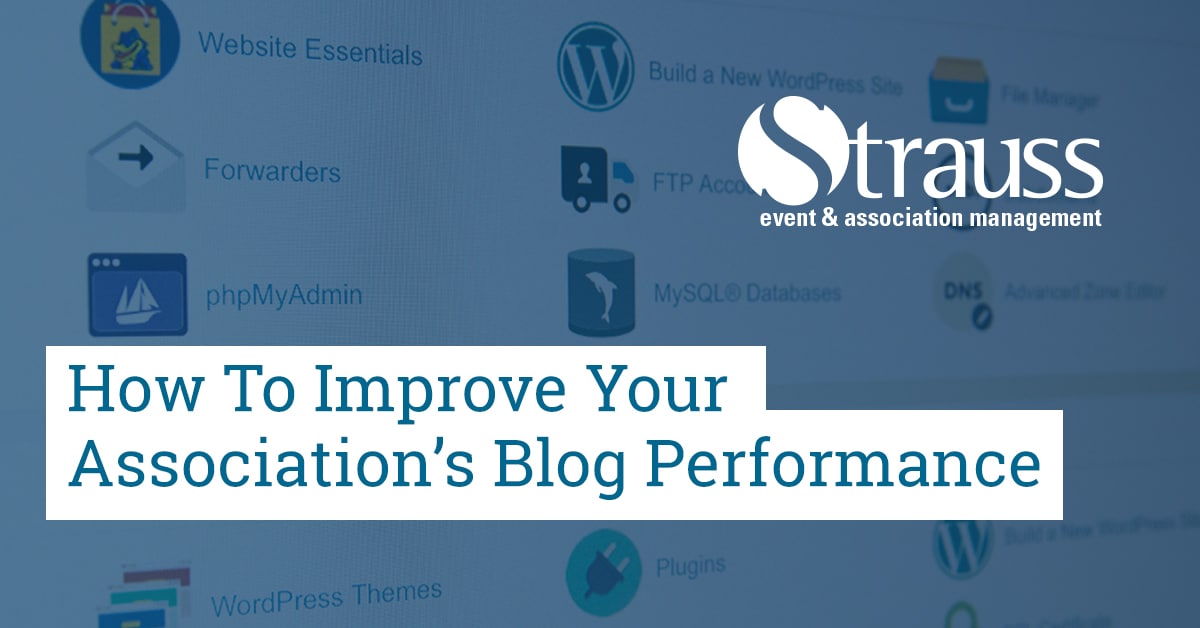There are many reasons your association has a blog: show-casing the knowledge and accomplishments of your members, building your online presence, or inspiring your audience. One of the main benefits to blog is that it’s one of the best ways to improve your Search Engine Optimization (SEO). Having a steady stream of new and unique content is the best way to get your website to appear at the top of search results.
If your association is not currently blogging, here is a more detailed article on one of the many reasons you should start. Read Why Should Associations Blog? Let Us Count the Ways.
Optimizing Your Blog
Just writing and posting blog articles regularly is a great start, but there are ways to gain even more SEO out of them. This article is not an instruction booklet but rather some ideas on how you can improve your blog. SEO is an entire industry and can’t be contained in just one article.
Keywords
Keywords are the words someone types into a search engine. This means you want to write for these searches and for your audience. The more specific the keyword(s), the higher chance someone searching for that keyword will find you. However, there is less of a chance someone will search that term.
Categories and Tags
Categories and tags are used within your website to categorize, sort, and connect your blog articles together. They can help your SEO as they allow the search engine bots find your blogs. They can and should often be keywords in themselves.
Categories sort your blog into, well, categories. If you’re running a baking website, your categories will be cakes, cookies, bars etc. The users will often know which category they are in. Blogs should usually only be in one to three different categories.
On the other hand, tags are more specific. A tag is where you would put things like, holiday baking, gluten free, or no-bake, the user will often not see these specific tags and you can have many tags on your blog.
Both categories and tags can relate your blog posts together show your readers related blogs and keep your users engaged as well as letting you know which topics your readers like the most.
Note: a post tag is not a hashtag. Hashtags do searches across entire platforms where post tags only work within your site.
Meta Descriptions
The meta description is an HTML attribute that provides a brief summary of a web page and is about 155 characters. Search engines such as Google often display the meta description in search results which is what users often see first. See the example below. These descriptions help users decide to click on the link or just keep searching.
Permalinks
Permalinks are the full URL of your blog that users and search engines see when navigating through your site. You want these to be as descriptive as possible, URLS are meant to signal what the content of a page are about it’s vital to ensure that your permalinks are helping and not hindering. Often, the permalinks are the same as the title of the page, but it can be changed.
A few tips to permalinks are to keep a consistent structure, use keywords, be descriptive but not too long, keep them ideally under 100 characters, and avoid dates/years if possible.
Internal Links
An internal link connects one page of a website to a different page on the same website. Search engines like internal linking, as it strengthens the overall search-optimize value of a website and allows clear paths for the search bots to crawl your site.
They should be relevant. earlier in this article I linked to a previous article that we wrote. This gives more information to the user and boosts SEO.
Inbound/Outbound Links
Inbound links are when other sites link to yours. When they come from reliable sources, they help add authenticity to your website from an SEO perspective. Search engine algorithms will see your blogs as content that others want to share.
Outbound links on your blog link to other sites. Old theories state that outbound links were bad because they took users away form your site, but outbound links can help SEO by building authenticity and balance to the overall SEO of a web page.
Your outbound link is someone else inbound link.
Tools to Help
Some great recourses for SEO on blogs is the Yoast WordPress plugin. It has both a free and pro version that helps you maximize the SEO on your WordPress website. It contains spots to directly enter your meta descriptions and keywords and can make SEO a little bit easier.
Moz.com is another website with a free and pro account that finds the best keywords, audits your current site, and helps you increase the SEO of your website and blogs.
SEO Can Be Both Harder and Easier Than You Think
This is just the tip of the iceberg that is SEO, which is constantly evolving. Tricks you heard about five to ten years ago do not work anymore. As Mark O-Brien, CEO of the web development firm Newfangled, says, “Google is smarter than you.” You can’t ‘trick’ your way to better google rankings. It takes work to get and maintain good search engine rankings. However, that doesn’t mean that SEO isn’t all or nothing. Even doing a few of these things will help. Once you start incorporating these tips into your work-pattern, it becomes second nature, and you can work on improving your association’s blog articles even mor

